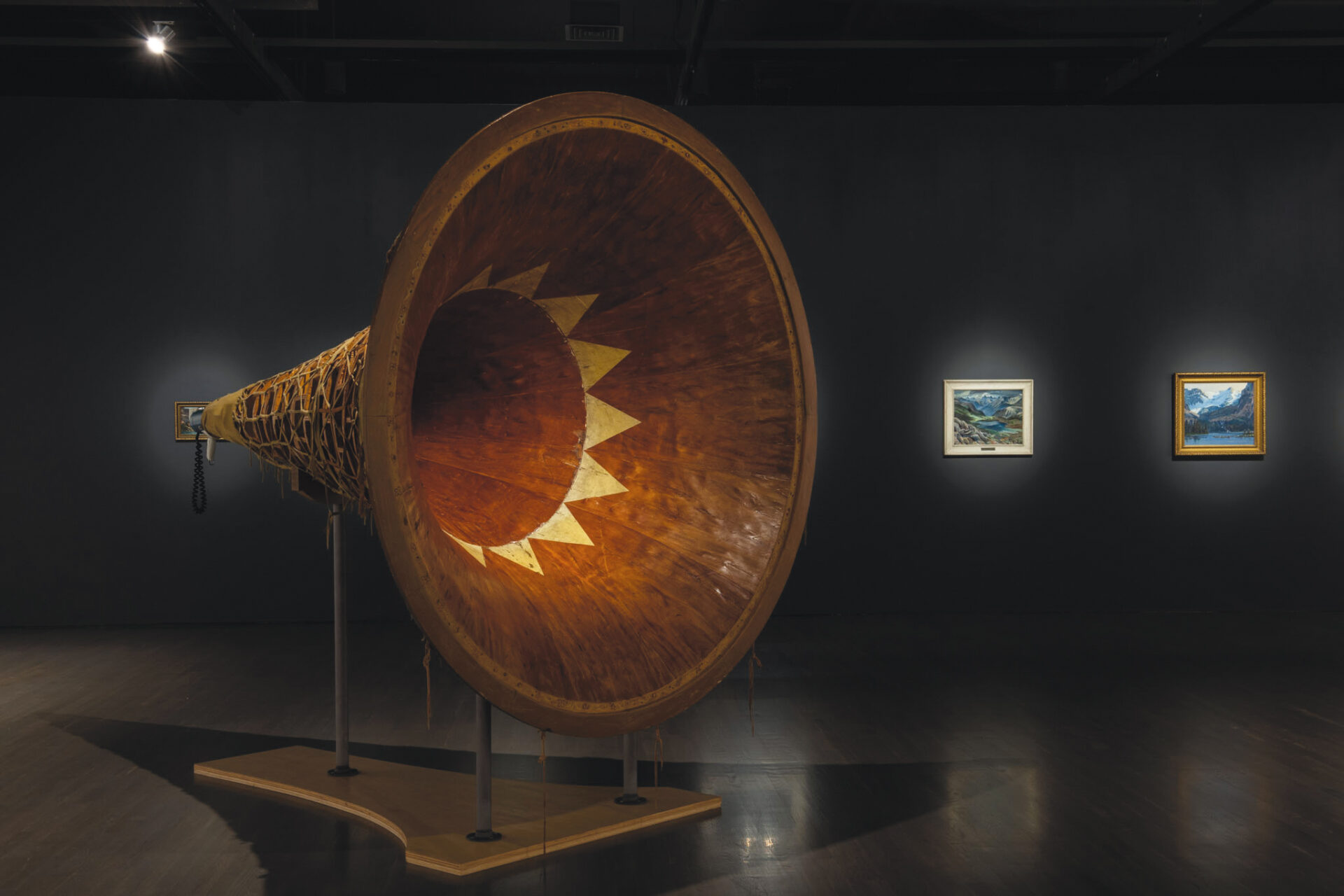The Shape of an Echo: Selections from the Permanent Collection
May 6 — December 4, 2022

Banff Centre for the Arts and Creativity, 2022.
Photo: Rita Taylor, courtesy of
Banff Centre for the Arts and Creativity
May 6 — December 4, 2022
[En anglais] In 1887, the Rocky Mountains Park Act established what is now Banff National Park as a reserve for the “advantage and enjoyment of the people of Canada.” It expanded the Canadian Pacific Railway’s territorial control over the perimeter of the Cave and Basin hot springs to contain a large tract of land including lakes, forests, and wildlife, with the provision that governmental authority could see to the “removal and exclusion of trespassers.”1 1 - “An Act Respecting the Rocky Mountains Park of Canada.” 1887. In Acts of the Parliament of the Dominion of Canada: Public General Acts (Ottawa: B. Chamberlin, 1887), 119 - 21. In the subsequent decades, this enshrined power allowed for the barring of Indigenous people — most prominently the Stoney Nakoda, who were blamed for the rapid depletion of wild game — from the national park, forcing them further onto reservations.2 2 - Theodore Binnema and Melanie Niemi, “‘Let the Line Be Drawn Now’: Wilderness, Conservation, and the Exclusion of Aboriginal People from Banff National Park in Canada,” Environmental History 11 (October 2006): 724 - 50.
It is with this legacy of segregation that arts organizations in Canadian national park towns still contend — particularly since many of them steward large collections of landscape paintings that depict the iconic mountain scenery, emptied of occupants, that seem to romanticize the historical dispossession of Indigenous land that made their institutional existence possible. The Banff Centre is certainly one such institution, and its Walter Phillips Gallery directly engages with its connection to this legacy in The Shape of an Echo. Landscapes produced throughout the twentieth century by the Banff Centre’s students, faculty, and residents line three of the main gallery’s four walls, and a break in the back wall leads to an anterior room of even more mountain paintings. Crisp woodblock prints and meticulous watercolours by the gallery’s namesake, Walter J. Phillips, appear in large numbers, having been moved from their permanent homes in various campus buildings. The viewer may note that the earliest of these were created in the 1920s, when parks conservation consultant Charles Gordon Hewitt was making the case that Indigenous peoples’ “passion for killing” had precipitated a “relentless war on the animals.”
Créez-vous un compte gratuit ou connectez-vous pour lire la rubrique complète !
Mon Compte



